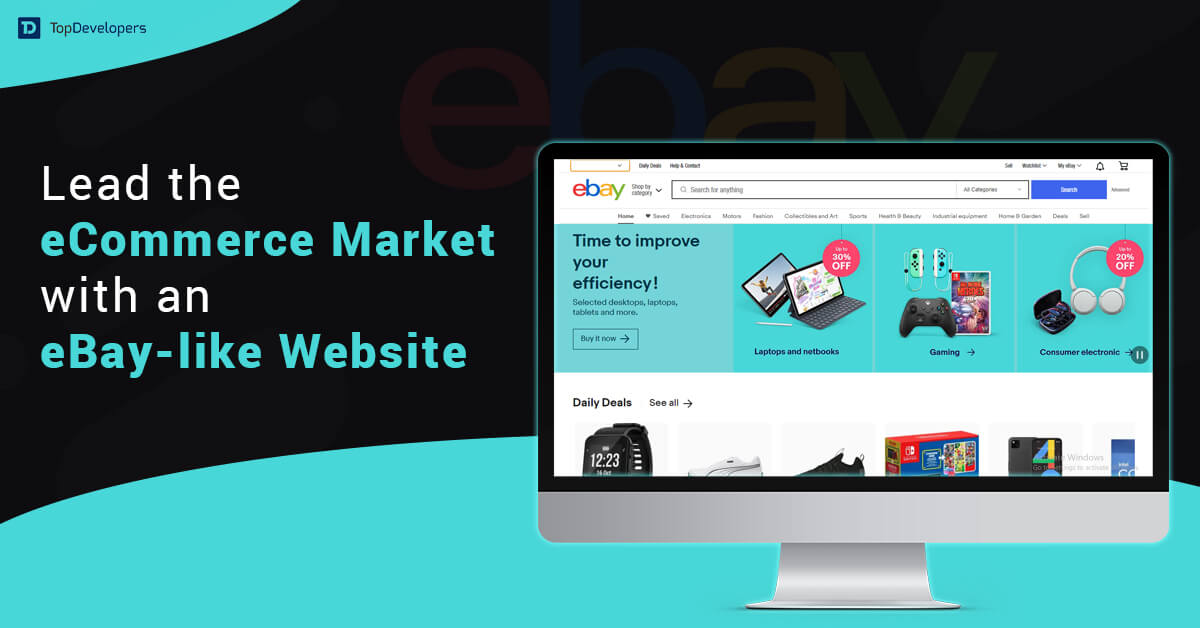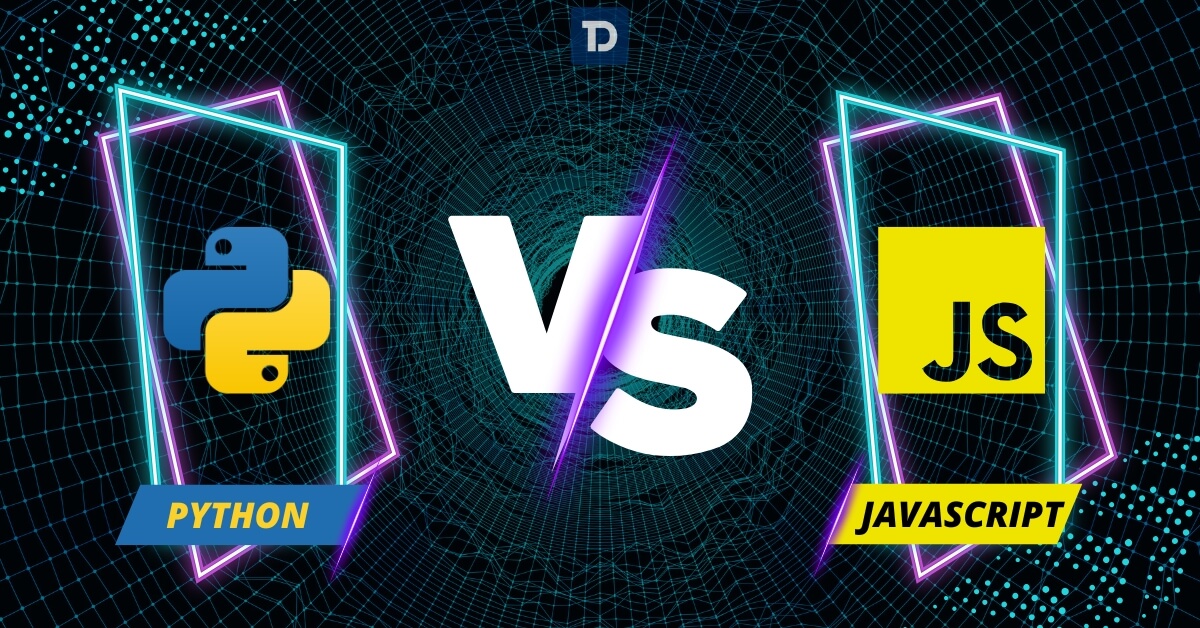
Node.js and React.js are two of the most popular technologies in the web development landscape. Both are JavaScript-based, making them ideal for web developers who want to work on both the front end and back end with a unified programming language.
According to the 2023 Stack Overflow Developer Survey, Node.js ranks as the most commonly used technology among developers for building back-end services, with 52% of professional developers choosing it. React.js is equally impressive, ranking as the most loved front-end library, with 48% adoption by developers worldwide.
The combination is particularly effective for creating modern, dynamic, and high-performance applications. Node.js handles server-side operations, while React ensures an interactive and responsive user interface. Together, they offer seamless integration, fast development cycles, and scalable solutions.
For example, applications like Netflix and LinkedIn leverage this powerful combination to deliver excellent user experiences. With Node.js’s real-time data handling and React’s dynamic rendering capabilities, this pairing is a go-to choice for SPAs, real-time collaboration tools, and e-commerce platforms.
Table of Contents
What is Node.js?
Node.js is an open-source and cross-platform technology that has become popular among web developers. It was developed in 2009 by Ryan Dahl and is based on Google Chrome’s V8 JavaScript engine. Node.js is now a standard technology used worldwide to create scalable and effective web applications. The technology has highly efficient frameworks that enable developers to build quality and robust apps optimized with your business logic of all kinds.
Node.js developers are adept at utilizing its non-blocking, event-driven architecture to create lightweight and fast applications. This makes Node.js an excellent choice for building large-scale web applications that can withstand high traffic loads without reducing performance and scalability.
Hence, enterprises today get top Node.js development companies on board to create real-time web applications like chatbots, gaming platforms, and collaborative tools. Additionally, Node.js developers leverage its extensive tools for development, including frameworks like Express.js, to speed up development and enhance functionality.
Node.js has developed into a vital tool for companies trying to create high-performance websites that can satisfy the needs of today’s market thanks to its simplicity of use and extensive feature set. With its ability to handle concurrent requests efficiently, Node.js empowers businesses to deliver reliable and scalable solutions.
What is Node.js Used For?
Node.js is primarily used for building scalable and high-performance back-end applications. It is ideal for developing APIs, handling real-time data, and powering applications like live streaming platforms, online gaming systems, and IoT solutions.
For instance, companies like Netflix, Uber, and LinkedIn rely on Node.js for their ability to handle large volumes of simultaneous requests efficiently.
Benefits of Node.js for Web Development
The following are some of the key benefits of using Node.js for web development:
- Scalability: Node.js’s non-blocking I/O model ensures it can handle a large number of concurrent requests, making it perfect for applications requiring real-time interactions.
- Performance: Its event-driven architecture ensures minimal latency and high throughput.
- Unified Development: Developers can use JavaScript across both the client and server sides.
- Rich Ecosystem: With over a million libraries in the npm repository, Node.js simplifies development by providing access to a vast array of tools and modules.
Features of Node.js
Node.js offers several standout features:
- Non-blocking I/O operations: Ensures fast and efficient execution of code.
- Event-driven architecture: Helps in building real-time, high-performance applications.
- Cross-platform compatibility: Enables developers to build server-side solutions that run seamlessly across operating systems.
- Lightweight and efficient: Node.js handles multiple requests with minimal resource usage.
What is React.js?
A well-known open-source JavaScript library for creating user interfaces is React.js. It was created by Facebook (now Meta), and a group of programmers and companies are now responsible for maintaining it. Reusable UI components can be made with React.js, which enables React.js developers to design sophisticated and dynamic websites efficiently.
From a commercial standpoint, React has a number of benefits. Firstly, it lets web developers design high-quality user interfaces quickly and efficiently, which can help organizations save time and money. With its component-based architecture, React.js enables developers to break down complex UIs into smaller, reusable elements, streamlining the development process. Reusable UI components that can be readily updated and tailored to a company’s unique requirements can be made by developers using React.js.
Moreover, React.js developers can leverage its growing ecosystem of libraries and tools, such as React DevTools and Redux, to further enhance productivity and maintainability. Overall, React.js is a powerful tool for businesses looking to build high-quality user interfaces quickly and efficiently. These are some of the cogent reasons why enterprises worldwide opt for React.js developers for hire, as they are assured of quality products at affordable costs.
What is React.js Used For?
React.js is primarily used for creating:
- Single Page Applications (SPAs): React is ideal for SPAs, where content updates dynamically without reloading the page.
- Dynamic Web Applications: React efficiently handles dynamic data-driven user interfaces.
- Reusable UI Components: Its modularity allows developers to reuse components across projects, saving time and effort.
For example, platforms like Instagram, Airbnb, and WhatsApp leverage React.js for their intuitive and responsive user interfaces.
Benefits of React.js for Web Development
React.js offers numerous benefits for web development:
- High Performance: The Virtual DOM ensures fast updates and rendering.
- Reusability: Components can be reused across projects, reducing development time and effort.
- SEO-Friendly: Features like server-side rendering improve the SEO performance of React apps.
- Strong Community Support: A vibrant developer community and extensive documentation make React highly accessible.
Features of React.js
React.js comes with several notable features:
- Virtual DOM: Improves application performance by updating only the necessary parts of the DOM.
- Component-Based Architecture: Facilitates modular, maintainable, and scalable UI development.
- JSX (JavaScript XML): A syntax extension that makes code easier to write and understand.
- Unidirectional Data Flow: Ensures predictable and easier-to-debug data management.
Can Node.js Be Used with React?
Yes, Node.js can be seamlessly integrated with React to create full-stack web applications. Node.js serves as the back-end runtime environment, handling server-side operations, while React is used to build dynamic and interactive user interfaces on the front end. Together, they form a powerful combination for creating modern web applications.
When used together:
- Node.js acts as the server-side engine that processes API requests and manages real-time data streaming.
- React works as the front-end library that updates the user interface dynamically and efficiently.
For example, in a real-time chat application, Node.js handles WebSocket connections for live updates, while React ensures a smooth user experience with its fast-rendering capabilities.
Using Node.js with React also enables the use of the same programming language (JavaScript) across the entire application stack, simplifying development and reducing context-switching for developers.
Why is the combination of Node.JS and React ideal for Web Development?
First of all, building high-speed web apps is made simple with Node.JS thanks to its exceptional performance and scalability. Secondly, Node.JS can manage high traffic volumes without experiencing performance issues since it is lightweight and has a small memory footprint.
The third benefit of React is its component-based architecture, which makes it simple to create modular and reusable UI components. Web designers can rapidly and easily design sophisticated user interfaces by integrating smaller, reusable components.
Finally, there are tons of tools and assistance available for developers because Node.JS and React have sizable and vibrant development communities; hence, in addition to making it simple to remain current on web development trends, this also makes it simple to find support and direction when needed.
Node.js and React are a popular combination for building modern web applications. Together, they provide developers with a unified JavaScript environment, enabling seamless communication between the front-end and back-end.
JSON API
Node.js simplifies the creation of lightweight JSON APIs, which are widely used in modern web development. It allows developers to efficiently handle API requests that feed data to React-based front ends, enabling faster and more reliable application performance.
Proxy
React’s built-in proxy feature ensures that API calls from the front end to the back end work seamlessly during development. This eliminates cross-origin resource sharing (CORS) issues, making Node.js and React integration smoother. This feature is especially beneficial when working on SPAs, where frequent data exchange between client and server is necessary.
Data Streaming
Node.js is ideal for applications that involve data streaming, such as live sports updates or video streaming platforms. By leveraging its event-driven architecture, Node.js efficiently streams data in chunks to the client, while React dynamically renders this data for the user.
MERN Stack
The MERN stack (MongoDB, Express, React, and Node.js) is one of the most popular technology combinations for full-stack development. Its modular architecture makes it easier to build scalable web applications. For instance, the MERN stack is commonly used for building dynamic e-commerce platforms and social networking sites.
Dashboards
Dashboards require frequent updates and real-time data visualization. Node.js handles the real-time data flow effectively, while React ensures a user-friendly and interactive UI. This combination is perfect for applications like financial dashboards or analytics tools.
Real-Time Data
Node.js and React work exceptionally well together for applications that require real-time data handling, such as chat applications or collaborative tools. For example, React can dynamically update the UI as Node.js pushes new messages or data changes to the client.
Chat/RTAs
Real-time applications (RTAs) like chat apps rely on fast communication between the server and client. Node.js facilitates real-time communication using WebSockets, while React efficiently updates the user interface. This synergy makes the combination ideal for real-time notifications, live tracking, and collaborative tools.
Faster SPA Development
Single Page Applications (SPAs) benefit greatly from the combination of Node.js and React. Node.js ensures smooth handling of server-side API requests, while React delivers fast, interactive page transitions. This combination improves both the developer experience and the end-user experience.
Faster Development
Using JavaScript for both the front-end (React) and back-end (Node.js) enables developers to build applications more quickly. This reduces context-switching and allows code reusability across the stack, accelerating the overall development process.
Scalability
Node.js is designed for scalability with its asynchronous, event-driven architecture. React complements this with its modular, component-based approach. Together, they can handle applications with high user traffic and dynamic content. This combination is commonly used in enterprise-grade applications requiring heavy data processing.
Cross-Platform Support
Node.js and React enable cross-platform development when combined with React Native. This allows developers to reuse code for web and mobile applications, saving development time and ensuring consistency across platforms.
High Performance
The combination of Node.js’s non-blocking I/O operations and React’s Virtual DOM ensures high performance. This is particularly beneficial for applications that need to handle large amounts of data or high user loads.
Community Support
Both Node.js and React boast strong community support, with active forums, libraries, and tools to aid developers. This ensures that developers can find resources and solutions for any challenges they encounter during development.
Prompt Growth
Node.js and React are constantly evolving with new features and improvements. This makes them a future-proof choice for developers looking to build modern, scalable applications. For instance, the recent updates in React 18 and Node.js’s growing ecosystem provide developers with cutting-edge tools.
A High Server Load
Node.js handles high server loads efficiently with its non-blocking I/O and event-driven architecture. React ensures the front-end remains lightweight and responsive even under heavy user activity. This makes the duo ideal for high-traffic applications like online marketplaces or social media platforms.
Popular Use Cases of Node.js and React
Node.js and React are widely used together to build a variety of modern web applications. Their flexibility and efficiency make them ideal for developing applications that require dynamic interactions, scalability, and real-time data handling. Here are some popular use cases of this powerful combination:
Single Page Applications (SPAs)
Single Page Applications (SPAs) are one of the most common use cases for Node.js and React. React’s ability to dynamically update the UI without refreshing the page, combined with Node.js’s efficient handling of back-end operations, makes them ideal for building SPAs. Examples: Platforms like Trello and Slack use this combination to provide seamless, interactive user experiences.
Progressive Web Apps (PWAs)
PWAs are web applications that behave like native apps, offering offline functionality, push notifications, and fast performance. Node.js handles the back-end logic and API calls, while React provides a responsive and smooth user interface. Examples: Companies like Uber Eats use Node.js and React to create PWAs for food delivery, ensuring a seamless experience even on low-speed networks.
Real-Time Applications
Real-time applications, such as chat apps, collaborative tools, and live streaming platforms, thrive on the combination of Node.js and React. Node.js handles WebSocket connections and real-time server updates, while React renders the data dynamically on the front end. Examples: Slack, a popular collaboration tool, leverages Node.js and React to manage real-time messaging and notifications efficiently.
E-Commerce Platforms
E-commerce platforms demand fast performance, scalability, and dynamic user interfaces. Node.js processes server-side requests efficiently, and React delivers a responsive and interactive front end, making them a perfect fit for this domain. Examples: Walmart, one of the largest e-commerce platforms, uses Node.js and React to handle high traffic and ensure a smooth shopping experience.
Analytics Dashboards
Dashboards that visualize large amounts of data in real time benefit greatly from Node.js and React. Node.js manages live data streams and API calls, while React ensures the data is displayed in an intuitive and interactive manner. Examples: Platforms like Google Analytics leverage similar technologies to provide real-time insights and data visualization.
Social Networking Applications
Social media platforms require high scalability, real-time updates, and engaging user interfaces. Node.js manages server-side tasks such as data synchronization, while React ensures a dynamic and engaging front end. Examples: Social media apps like LinkedIn and Instagram leverage Node.js and React for their seamless user experiences.
Security in Node.js and React
Security is a critical aspect of web development practices, especially when building applications that handle sensitive user data or operate at scale. Node.js and React provide robust tools and practices to ensure the security of your application.
Node.js Security Best Practices
Node.js, being a back-end runtime environment, requires careful handling of API security and server-side operations. Here are some best practices:
Use Helmet: Helmet is a middleware that helps secure Node.js applications by setting various HTTP headers. It prevents vulnerabilities like clickjacking, XSS, and content sniffing.
const helmet = require(‘helmet’);
const express = require(‘express’);
const app = express();
app.use(helmet());
Environment Variables with Dotenv: The dotenv library helps manage sensitive configuration data, such as API keys and database credentials, securely.
require(‘dotenv’).config();
const dbPassword = process.env.DB_PASSWORD;
Validate Input: Always validate and sanitize user inputs to prevent injection attacks.
React Security Best Practices
React, being a front-end library, focuses on protecting the user interface and preventing malicious attacks. Here are some best practices:
Avoid XSS Vulnerabilities: React escapes user inputs by default to protect against cross-site scripting (XSS) attacks. However, care must be taken when using dangerouslySetInnerHTML or third-party libraries.
const content = “<script>alert(‘XSS!’)</script>”;
// React automatically escapes this content
Use Security Headers: Combine React with Helmet on the server side to enforce security policies.
Monitor Dependencies: Regularly update and audit third-party libraries to eliminate vulnerabilities.
Combined Security Practices
When using Node.js and React together:
- Use HTTPS to secure client-server communication.
- Employ authentication mechanisms like OAuth or JWT for user sessions.
- Leverage content delivery networks (CDNs) for serving static files securely.
By following these practices, you can build secure applications that protect user data and withstand potential threats.
Conclusion
React and Node.js are two strong technologies with much to offer while developing a website. They enable the development of scalable, fast, and user-friendly websites that utilize real-time data. React.js has a component-based architecture that makes it simple to build complex user interfaces, while Node.js is well-renowned for its capacity to manage enormous volumes of data and traffic. They come together to make up the MERN stack, a well-liked full-stack development framework that enables programmers to use JavaScript for the complete stack.
While comparing Node.js vs React.js, it’s important to note that these technologies are not competitors but complementary tools. Node.js excels as a back-end runtime for handling server-side operations, whereas React.js is a front-end library for building dynamic and interactive user interfaces. Together, they form a powerful combination for full-stack web development.
Web development companies worldwide leverage React and Node.js to deliver cutting-edge web solutions, ensuring high performance, scalability, and user satisfaction. From e-commerce platforms to real-time collaboration tools, this combination has proven to be an ideal choice for creating dynamic and engaging web applications.
Overall, both development technologies offer a range of benefits for web development, making them ideal for building web applications that require real-time data, scalability, and a great user experience. Their versatility, ease of use, and high performance make them popular worldwide for web developers. This popularity is also evident in how leading web development companies adopt these technologies to stay competitive and deliver top-notch results to their clients.
 Avantika Shergil
| Dec 9, 2024
Avantika Shergil
| Dec 9, 2024
Avantika Shergil is a technology enthusiast and thought leader with deep expertise in software development and web technologies. With over 8 years of experience analyzing and evaluating cutting-edge digital solutions, Avantika has a knack for demystifying complex tech trends. Her insights into modern programming frameworks, system architecture, and web innovation have empowered businesses to make informed decisions in the ever-evolving tech landscape. Avantika is passionate about bridging the gap between technology and business strategy, helping businesses build customized software and website, and understand about different tools to leverage effectively for their ventures. Explore her work for a unique perspective on the future of digital innovation.





